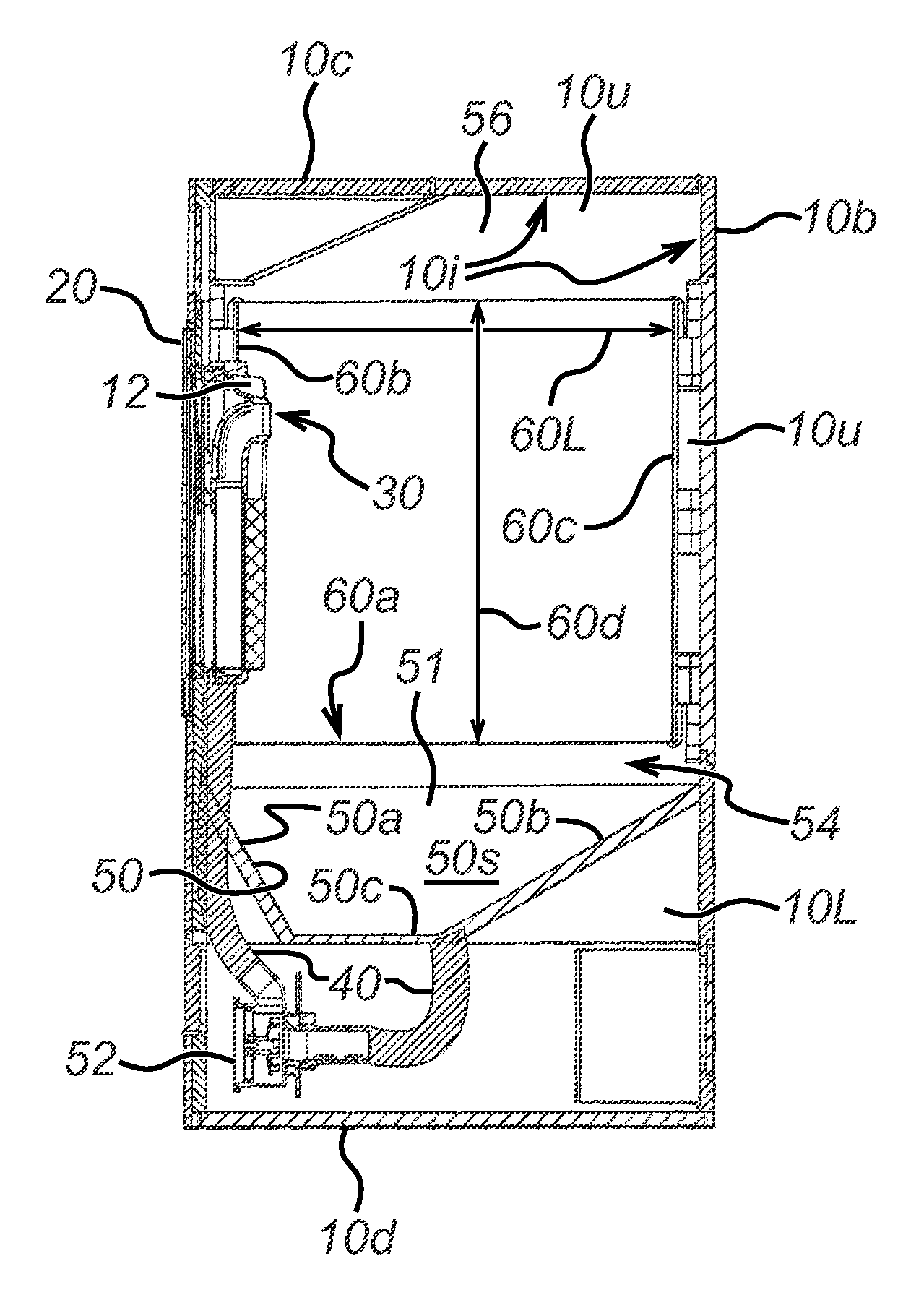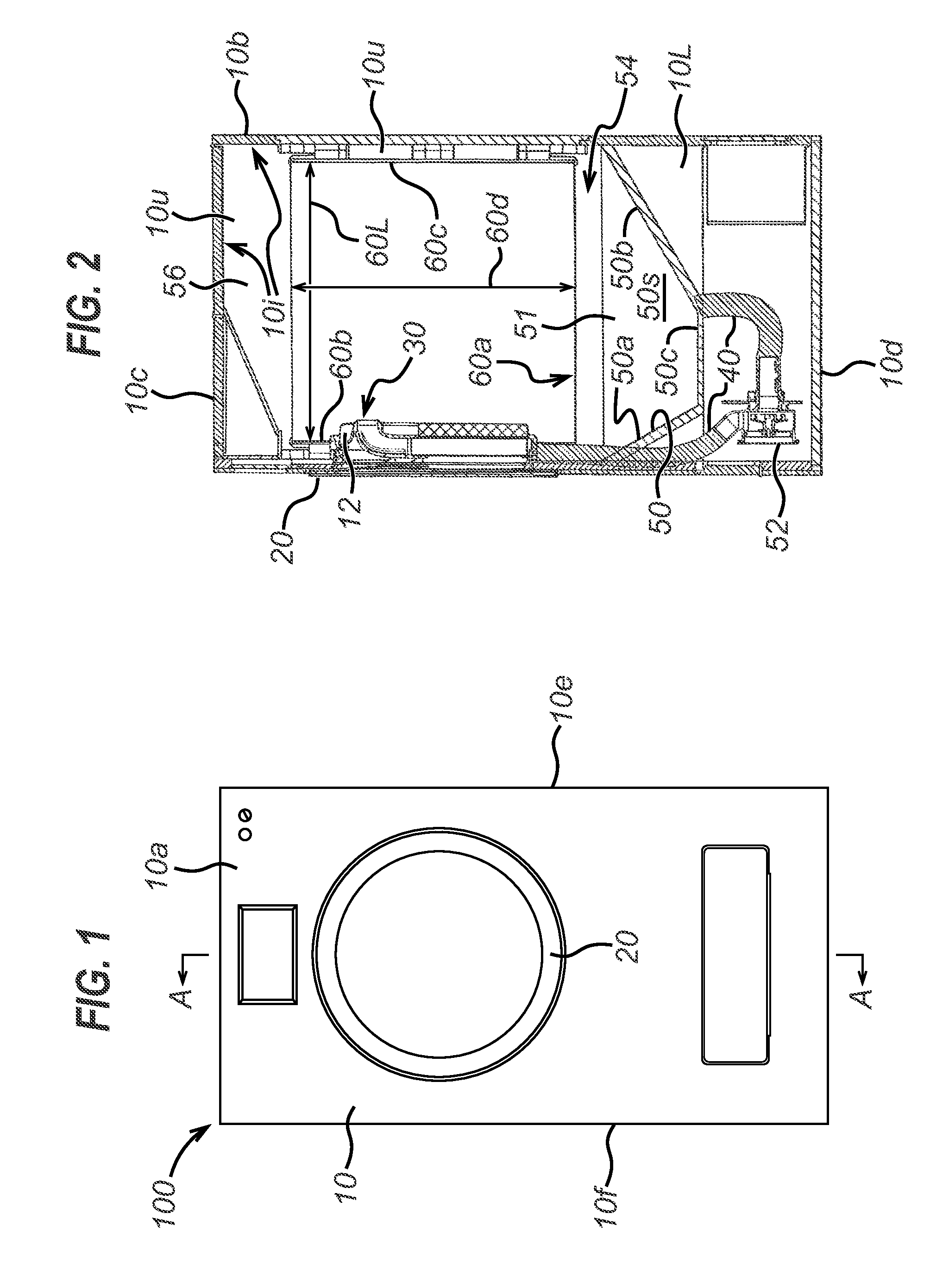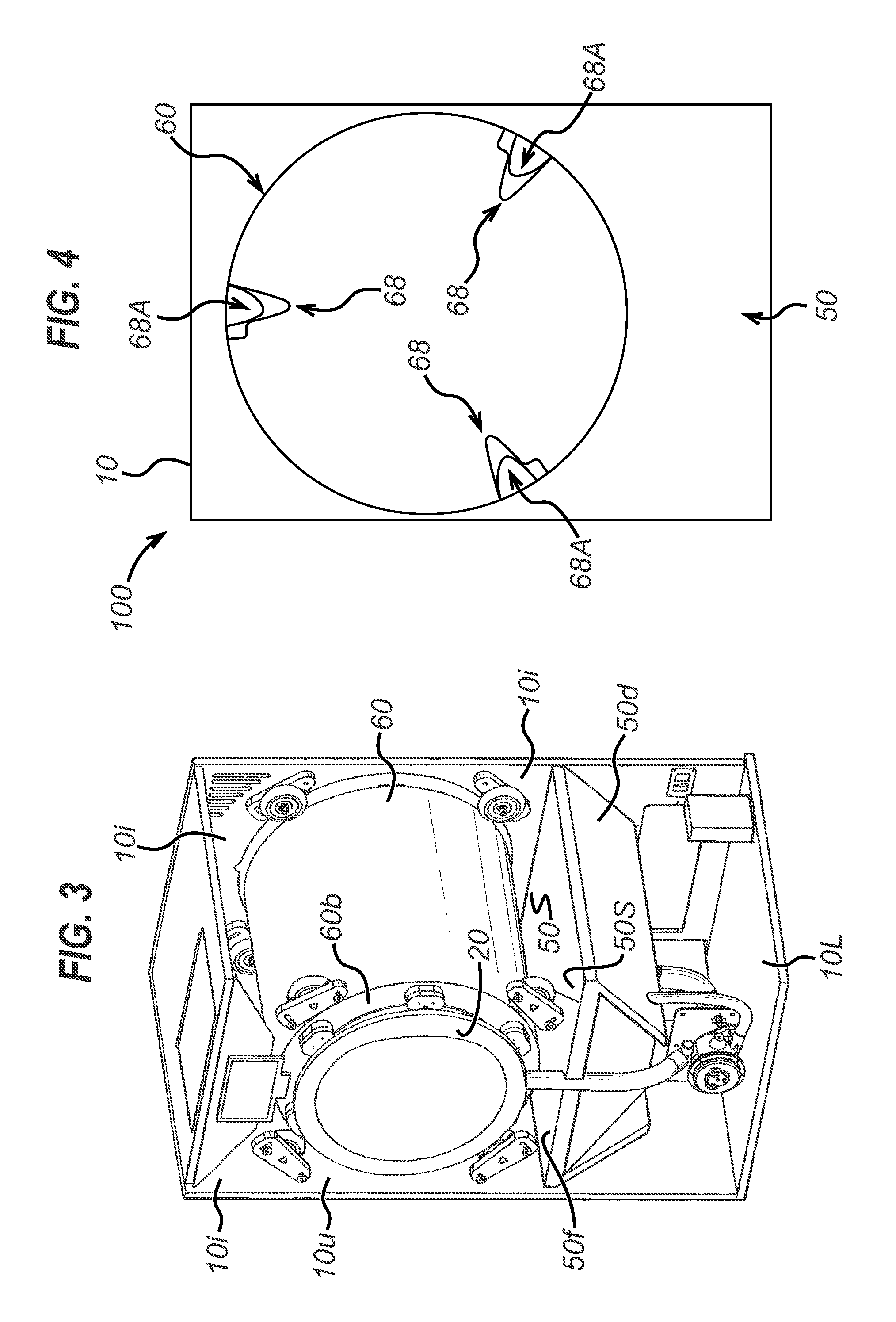Cleaning apparatus and method
a technology of cleaning apparatus and cleaning method, which is applied in the direction of other washing machines, durable buildings, detergent compounding agents, etc., can solve the problems of high water consumption, extreme cost and environmental damage, and many of these technologies are, however, technically very complex, so as to avoid the retention of such large fluid volumes, facilitate the maximization of cleaning volume, and enhance the effect of cleaning the substra
- Summary
- Abstract
- Description
- Claims
- Application Information
AI Technical Summary
Benefits of technology
Problems solved by technology
Method used
Image
Examples
Embodiment Construction
[0073]The present applicant has addressed the issues associated with using a cleaning apparatus to clean soiled substrates with a solid particulate material and particularly the problems associated with maximizing the cleaning volume, such as a cylindrical cage or drum, within such a cleaning apparatus. Maximising the cleaning volume has the effect of improving the cleaning efficiency in terms of watts of power per kg of dry substrate.
[0074]Referring now to the drawings, an apparatus (100) according to the invention typically comprises a housing, cabinet or external casing (10) which can comprise a front wall (10a), rear wall (10b), top wall (10c), bottom wall (10d) and side walls (10e) and (10f). The external casing (10) further comprises an upper internal volume (10U) and a lower internal volume (10L).
[0075]A partition (50) divides the upper internal volume (10U) from the lower internal volume (10L). Partition (50) includes, or consists of, a collecting region (50S) in which solid...
PUM
| Property | Measurement | Unit |
|---|---|---|
| diameter | aaaaa | aaaaa |
| height | aaaaa | aaaaa |
| height | aaaaa | aaaaa |
Abstract
Description
Claims
Application Information
 Login to View More
Login to View More - R&D
- Intellectual Property
- Life Sciences
- Materials
- Tech Scout
- Unparalleled Data Quality
- Higher Quality Content
- 60% Fewer Hallucinations
Browse by: Latest US Patents, China's latest patents, Technical Efficacy Thesaurus, Application Domain, Technology Topic, Popular Technical Reports.
© 2025 PatSnap. All rights reserved.Legal|Privacy policy|Modern Slavery Act Transparency Statement|Sitemap|About US| Contact US: help@patsnap.com



